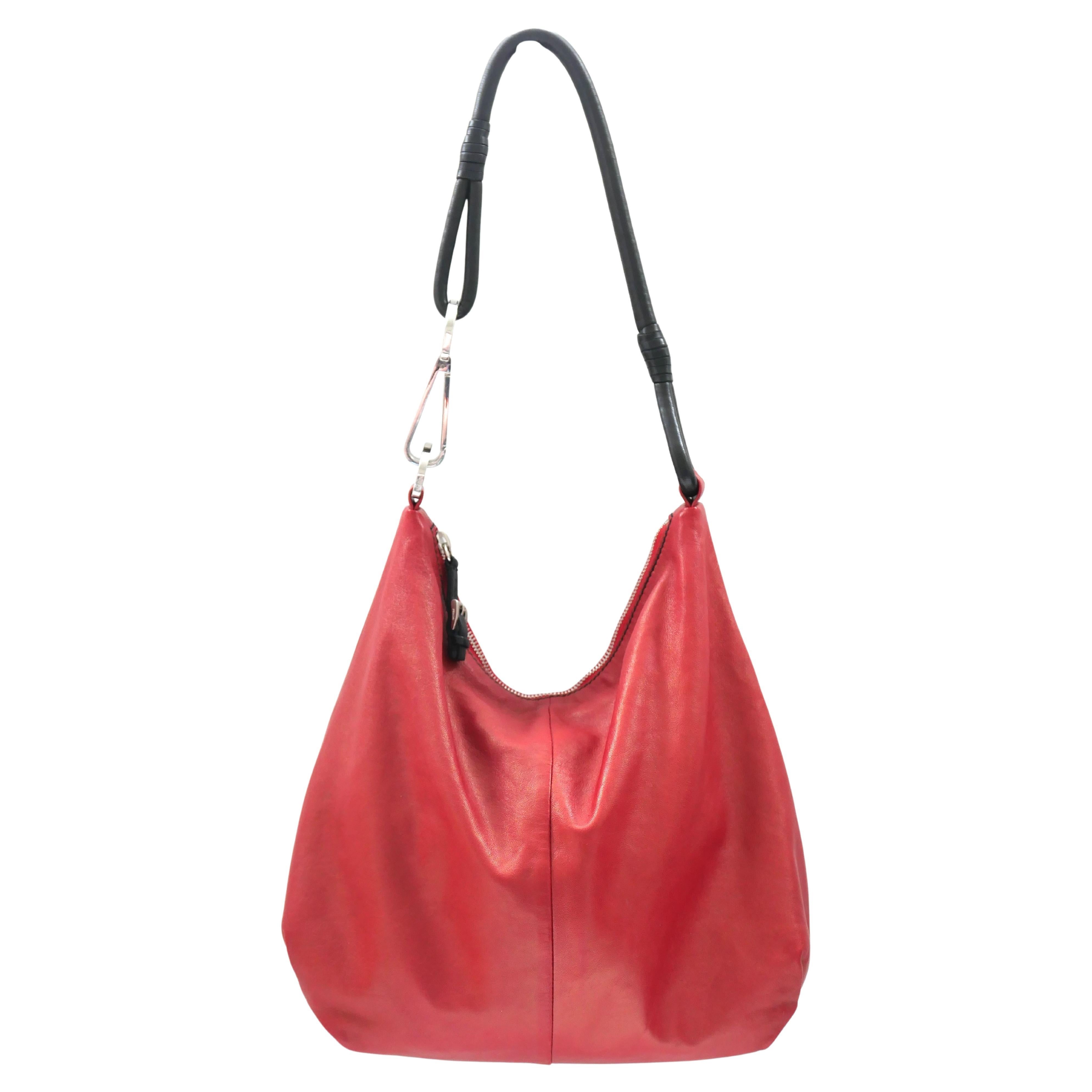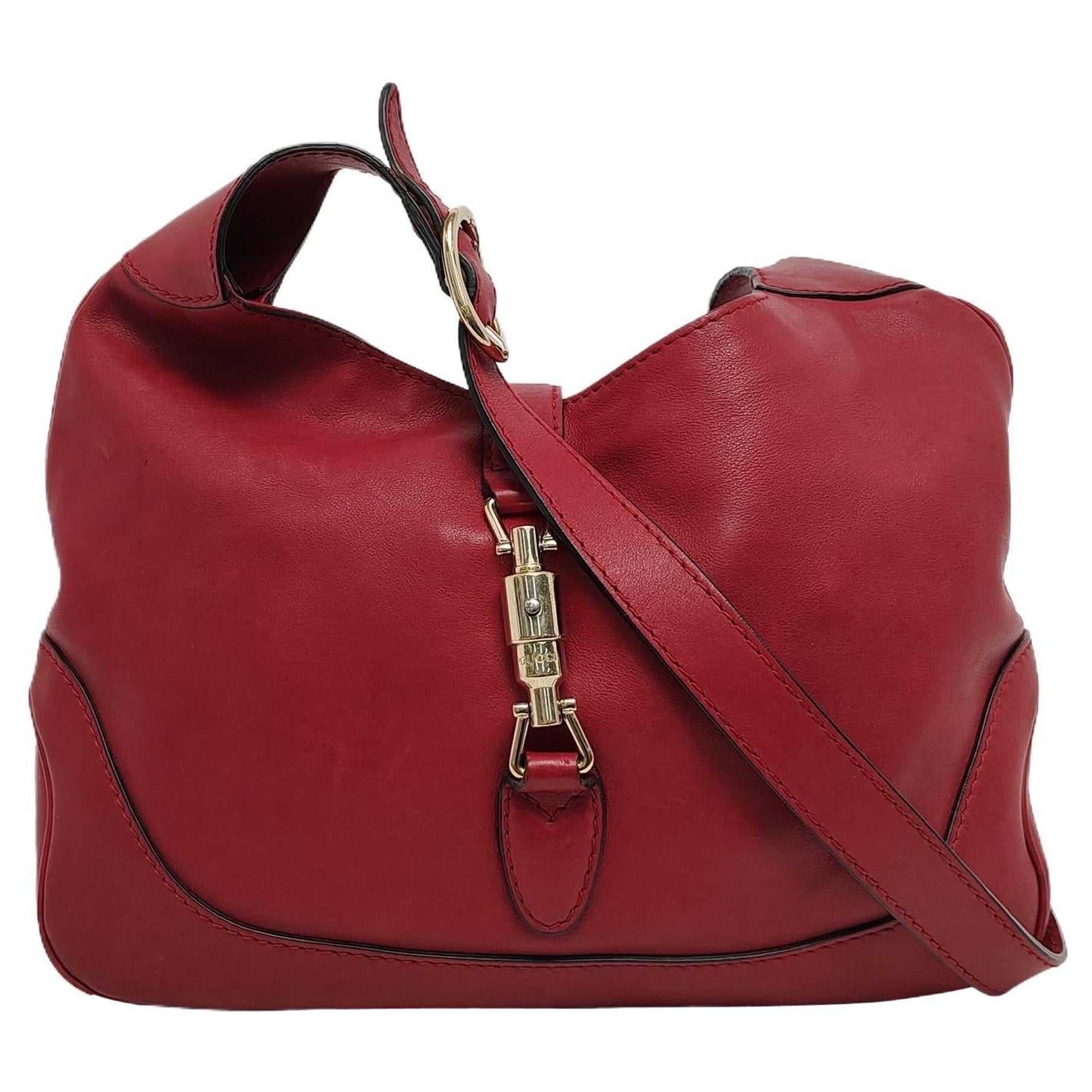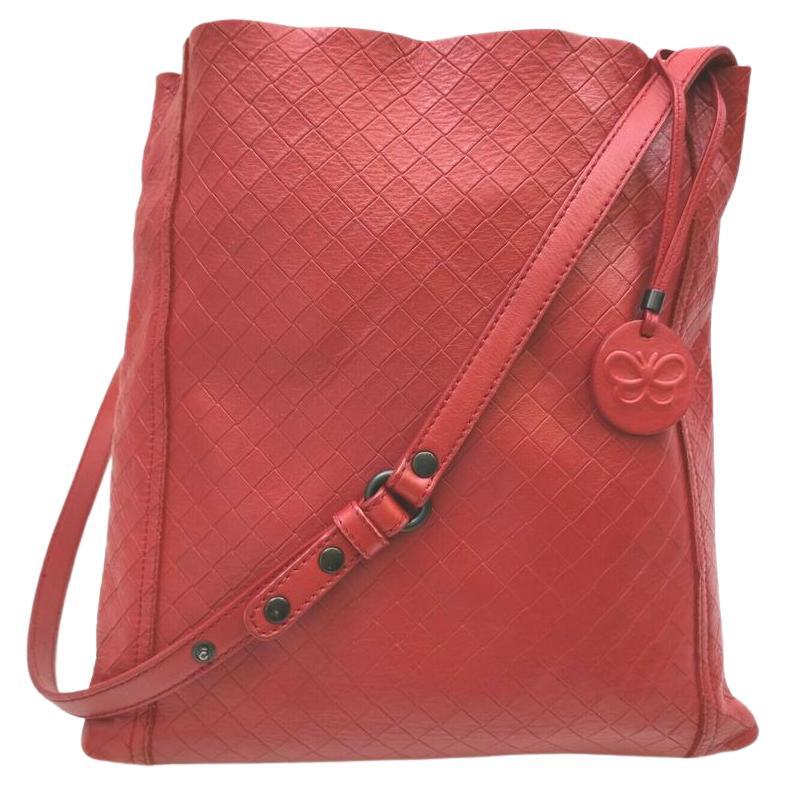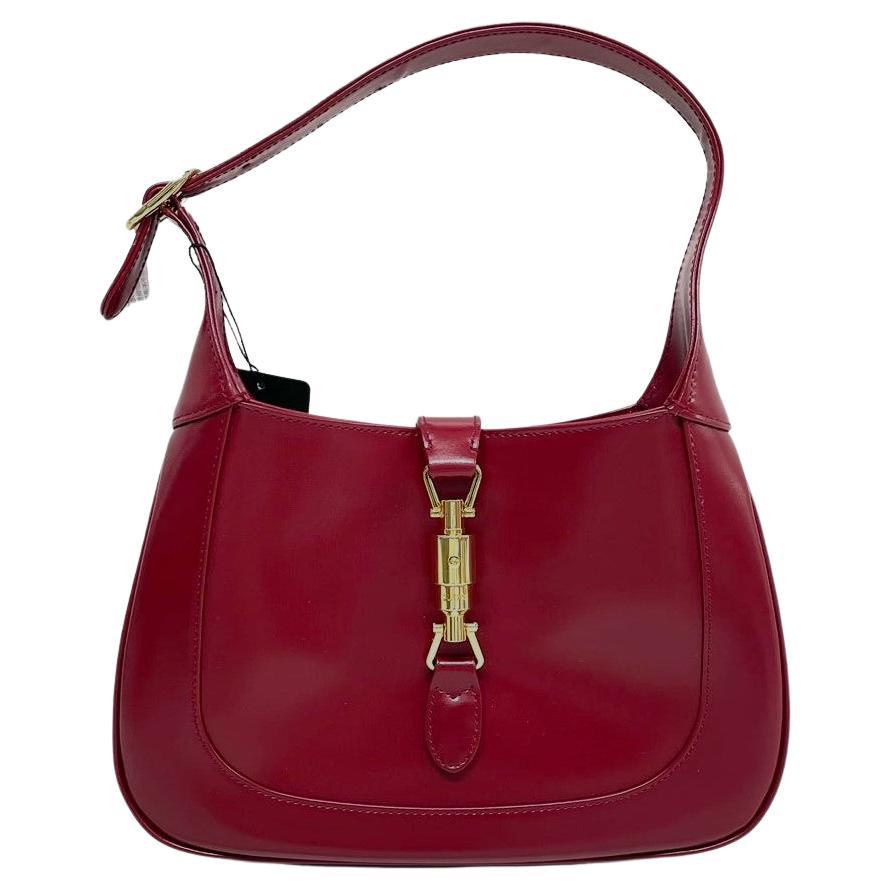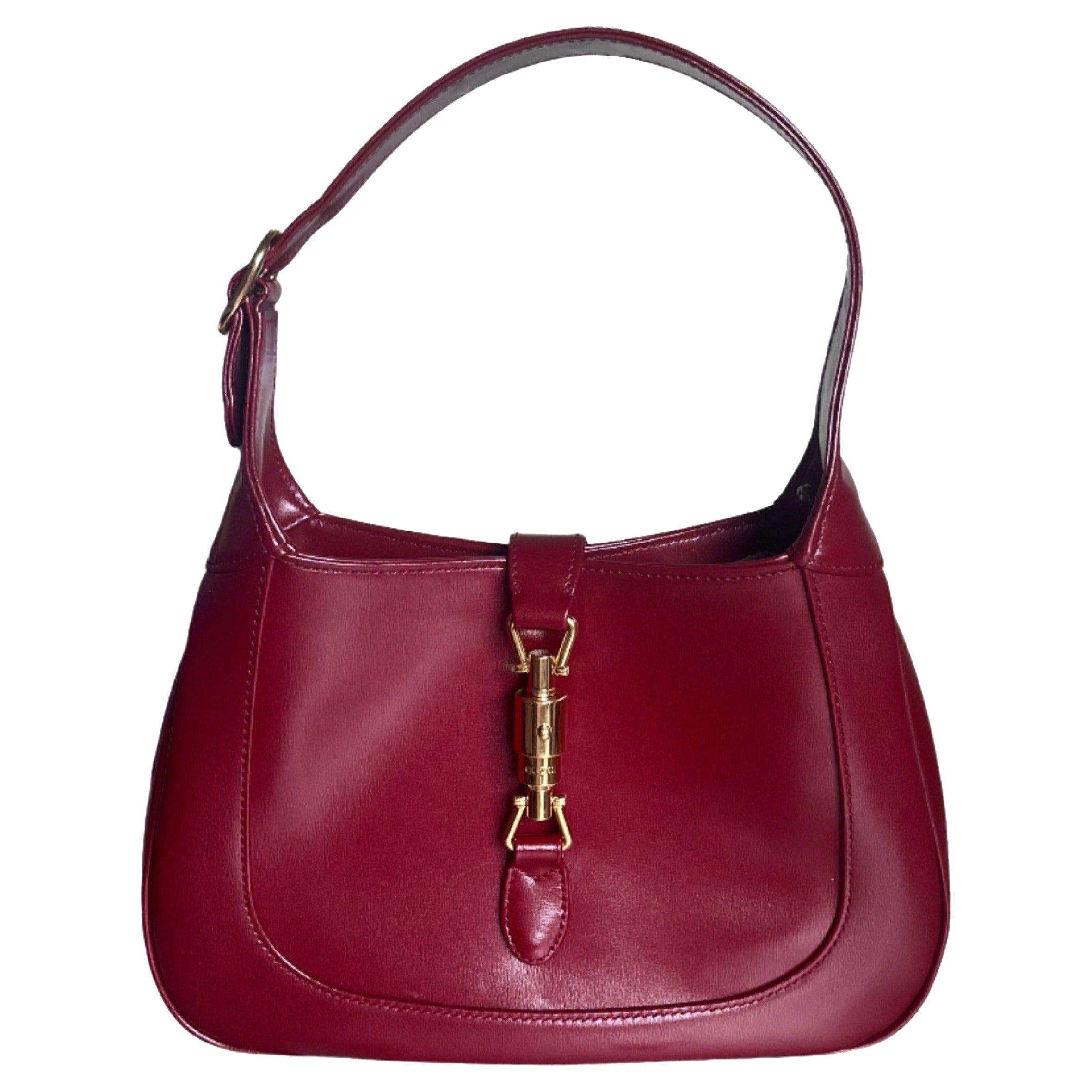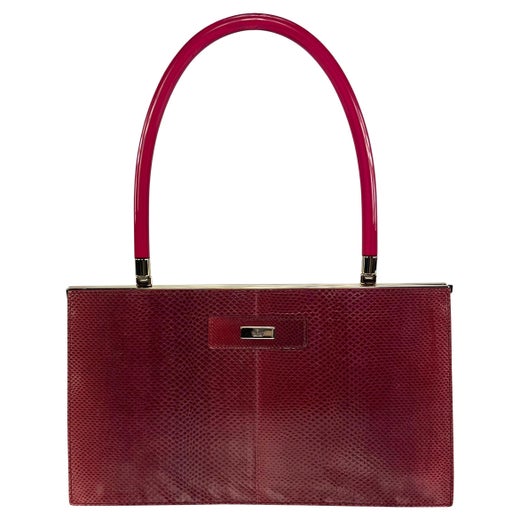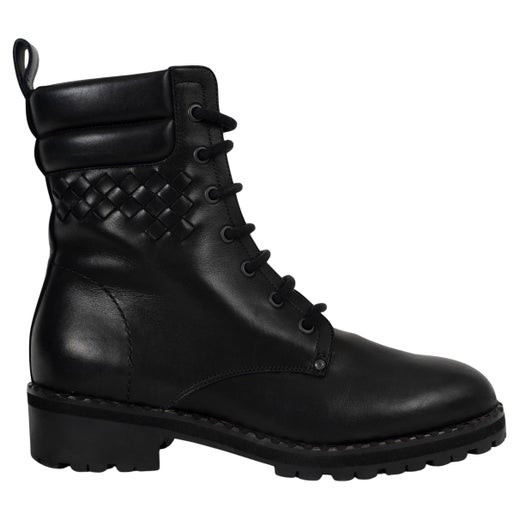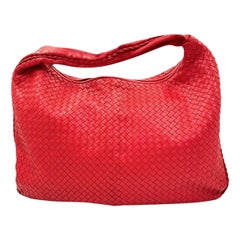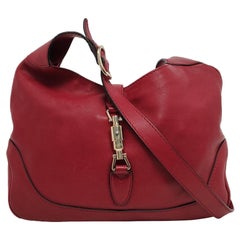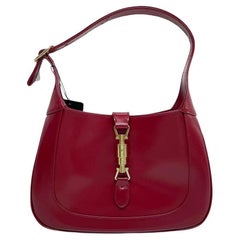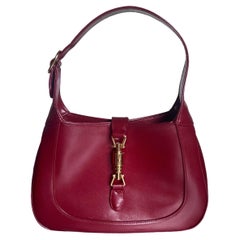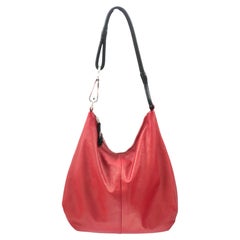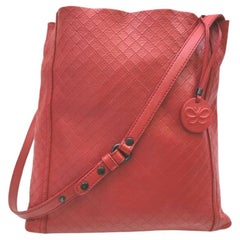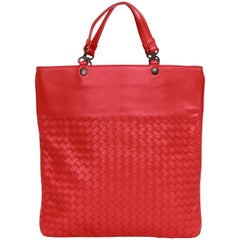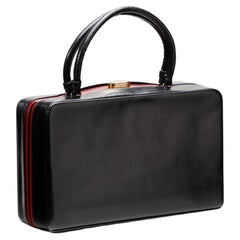Gucci Jackie Vintage Red Felt and Black Leather Silver Hardware
About the Item
- Designer:
- Brand:
- Dimensions:Height: 9.85 in (25 cm)Width: 7.88 in (20 cm)Depth: 3.94 in (10 cm)
- Place of Origin:
- Period:
- Condition:
- Seller Location:AUBERVILLIERS, FR
- Reference Number:1stDibs: LU3903226547702
Gucci
Long before trend-bucking creative director Alessandro Michele brought his hallucinatory “Utopian Fantasy” campaign to Gucci, it was a modest Italian leather shop. Today, it’s an internationally renowned luxury house with an iconic logo, and vintage Gucci clothing, handbags and shoes are among high fashion's most covetable goods.
Guccio Gucci (1881–1953) admired the stylish suitcases he saw wealthy guests arrive with at the Savoy Hotel in London, where he worked as a bellhop. So, in 1921, after a stint at Franzi, a luggage company in his hometown of Florence, he opened a leather goods shop of his own.
At first, Gucci’s Florence business specialized in equestrian accessories. But as its reputation flourished, particularly among the English aristocracy, so too did its footprint. In 1938, he brought three of his sons — Aldo, Vasco and Rodolfo — into the business and expanded it to Rome and later Milan. In the mid-1930s, a League of Nations embargo against Italy pushed Gucci to experiment with alternatives to imported leather. Its woven hemp fabric from Naples, adorned with the brand’s signature diamond print, was a hit, especially among A-list celebrities. The material was first used on suitcases before finding enduring popularity on handbags. (No list of revered designer purses would be complete without Gucci.)
In the 1950s, Elizabeth Taylor carried one of Gucci’s bamboo-handled tote bags, another adaptation to material rationing. After Jackie Kennedy was seen sporting a slouchy Gucci tote in 1961, it was renamed for the First Lady. Then Grace Kelly, on a visit to the boutique in Milan, inspired Rodolfo Gucci to work with Italian illustrator and Gucci textile designer Vittorio Accornero on the Flora print in 1966. Taking cues from Sandro Botticelli’s Primavera, with its pattern of flora and insects, it was painted entirely by hand and featured no fewer than 37 colors.
In 1953, just 15 days after opening his first store on New York’s 5th Avenue, Guccio passed away at 72. The early 1970s saw store openings in Tokyo and Hong Kong, but by the late 1980s, Gucci was floundering. Rodolfo Gucci took charge in 1982, but family drama and lawsuits ensued. In 1993, Rodolfo’s son, Maurizio, transferred his shares in the company to Investcorp, ending the family’s involvement in Gucci. Dawn Mello, then-president of Bergdorf Goodman, joined as creative director in 1989. But it was Tom Ford, who took over as creative director in 1994, who ultimately revived the brand.
Ford’s racy ads, shot by photographers such as Mario Testino, stirred controversy. And his potent vision of sexed-up femininity — with “jewel-toned satin shirts unbuttoned to there,” as Vogue described his breakthrough 1995 runway show — was wildly successful. The new millennium brought new ownership — Pinault Printemps Redoute in 2004 — and a more toned-down vision from Frida Giannini, who became sole creative director in 2006. Alessandro Michele was named creative director in 2015, and the storied brand took a giant leap forward.
Find vintage Gucci clothing and accessories on 1stDibs.
Bottega Veneta
Bottega Veneta has garnered acclaim over the course of its long history for impeccable quality and unassuming elegance. Known for its signature intrecciato weave as well as the overall superb craftsmanship that characterizes its handbags, jackets, shoes and other items, the Italian luxury fashion house is revered all over the world.
Bottega Veneta was launched in 1966 in Vicenza, Italy, by Michele Taddei and Renzo Zengiaro. Its artisans worked to produce by hand what were primarily leather goods, and from the start, the label’s focus on traditional craft techniques became integral to its now-global reputation for exceptional design.
Developed by Bottega Veneta in the late 1960s, the intrecciato weaving technique gives the brand’s bags their suppleness and strength. The northeastern Italian region where the label was founded was largely associated with clothing back then, and sewing machines at the local ateliers weren’t intended to be used with the strong leather with which Bottega’s artisans were working in order to create the house’s coveted bags, wallets and other accessories.
The precise weaving technique, which sees strips of fine leather woven by hand into a durable and robust pattern, was a practical solution. The resulting style has become a Bottega Veneta signature, making products such as its iconic Intrecciato Hobo handbag instantly recognizable.
Zengiaro left Bottega Veneta during the late 1970s, and Taddei then turned the brand over to his ex-wife, Laura Moltedo, and her second husband, Vittorio Moltedo. Designs took on a bolder look and the traditional craft approach was prioritized. The brand found success in the United States and expanded rapidly throughout the 1980s, becoming popular with celebrities and the cultural elite. American artist Andy Warhol often frequented the house’s Manhattan boutique and even made a short film for the company.
As competition increased during the 1990s, Bottega Veneta’s popularity declined. The company began to see an upswing after Gucci, which is owned by luxury group Kering, acquired them in 2001. Tomas Maier was appointed creative director by Gucci’s Tom Ford and worked to return to the understated beginnings that had defined the brand’s design ethos.
Maier’s celebrated Knot clutch, which was based on a 1978-era design and debuted in 2001, was a result of his enthusiasm for pared-back design as well as his efforts to showcase the house’s legacy of meticulous craftsmanship. In 2006, Bottega opened Scuola della Pelletteria to train the next generation of leatherworking artisans.
In 2018, British designer Daniel Lee took the role of creative director and earned a number of awards and accolades for the label. Before he left in 2021, Lee introduced an array of universally lauded designs such as Bottega Veneta Tire boots, the Cassette bag and the Mini Jodie, which is named after actress Jodie Foster. Matthieu Blazy was named creative director in 2021 following a history of design work for Celine, Maison Martin Margiela, Calvin Klein and other brands.
Find vintage Bottega Veneta footwear, accessories and clothing on 1stDibs.
- ShippingRetrieving quote...Shipping from: Shatin, Hong Kong
- Return Policy
More From This Seller
View All2010s Italian Hobo Bags
2010s Italian Shoulder Bags
2010s Italian Shoulder Bags
2010s Italian Shoulder Bags
2010s Italian Hobo Bags
Early 2000s Italian Shoulder Bags
You May Also Like
Early 2000s Unknown Shoulder Bags
20th Century Structured Shoulder Bags
21st Century and Contemporary Italian Top Handle Bags
1950s Italian Evening Bags and Minaudières
21st Century and Contemporary Italian Bucket Bags and Drawstring Bags
21st Century and Contemporary Crossbody Bags and Messenger Bags
Read More
Gucci’s Anatomical Heart-Shaped Bag Is Surprisingly Romantic
Created during Alessandro Michele's tenure at the brand, this sparkling, whimsical minaudière feels just right for a night out.
Explore a Century of Gucci Fashion in London
The iconic Italian label’s traveling exhibition has just arrived in London.

